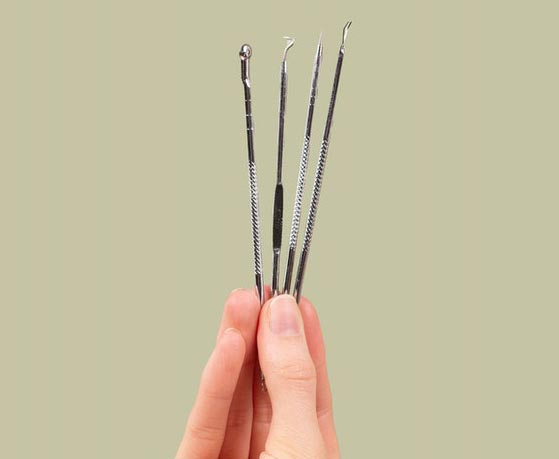Ingrown facial hair is one of the downsides of removing facial hair with shaving, tweezing or waxing. Instead of the hair growing out towards the surface, it grows sideways into the skin. Ingrown hairs can be caused by poor shaving techniques or shaving aftercare, or if dead cells are clogging the follicle.
If you suffer from ingrown hairs, you’ll know how painful and irritating they can be. Here are some of the best ways you can reduce, prevent, an treat ingrown hair.
How to prevent and treat ingrown facial hair:
- Exfoliate regularly
- Use correct shaving techniques
- Clean your razor after each use
- Cleanse and moisturize your skin
- Use warm compresses
Ways to get rid of an ingrown facial hair
Let’s delve a little deeper into the ways to rid of ingrown hair, and treat any that appear.
How to treat ingrown hair
· Use warm compresses.
Soak a clean towel in hot (but not overly hot) water, and then apply it to the area with the ingrown hair. The heat will help soften the skin, and make the
hair come closer to the surface. It is easy to remove the ingrown hair with tweezers when the hair at back to the surface.
Repeat the process until you finally remove the ingrown facial hair.
· Exfoliate.
Exfoliating the skin will help loosen the ingrown facial hair that is trapped under the skin’s surface because of dirt, dead skin cells, and oil. This then makes it easier to remove the ingrown hair with the aid of tweezers or sterile needle.
· Use antibiotics if necessary.
Seeing a doctor for ingrown hair is unnecessary unless it has become infected.
If an ingrown hair becomes swollen and causes discomfort, see your doctor to get some antibiotics.
· Avoid removing hair from your face
Ingrown hair can get rid of itself without treatment. Stop shaving, waxing or tweezing the hair in that area until the ingrown facial hair disappears. If
this is not an option for you, check other methods.
You may need antibiotics to treat if it has become infected and stop shaving
the area with the ingrown hair until it vanishes.
How to prevent ingrown facial hair
Getting rid of an ingrown facial hair is just the first step; you should
also try to prevent its reoccurrence to avoid the pain that comes with it.
· Cleanse your face.
Clean your face every night with a cleanser to remove oil or any dirt clogging your pores. Clogged pores increases the risk of having ingrown hairs.
· Use a warm compress before shaving.
Before shaving, tweezing, or waxing apply a warm compress to your face. Doing this will open the pores and prevent the occurrence of an ingrown facial hair.
· Shave correctly.
While shaving, avoid pulling your skin taut.
· Don’t shave too closely.
Don’t shave your facial hair too closely to avoid ingrown hairs.
· Clean your razor blade after each stroke.
After each stroke, rinse the blade with water to prevent an infection. After shaving, dip the razor blade into alcohol for disinfection.
· Use shaving cream.
Do not shave a dry face. It is a quick way to cause an ingrown facial hair.
Before you shave, apply shaving cream mixed with warm water on your face.
· Moisturize your face after shaving.
Moisturize your face and facial hair after shaving to prevent dry skin. Also, apply cold water to your face after shaving, tweezing or waxing. This will help reduce irritation and tighten the pores.
· Use depilatory cream instead of shaving
Instead of shaving, you can use a depilatory cream to remove facial hair. Depilatories are specifically designed for this purpose.
Apply on a small area first. If you notice no allergies, use on other areas of the face.
